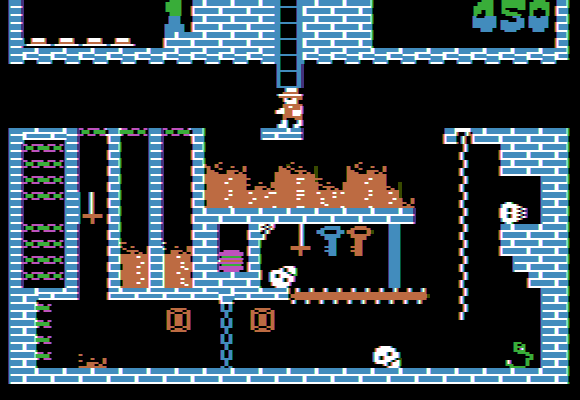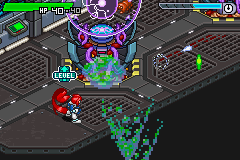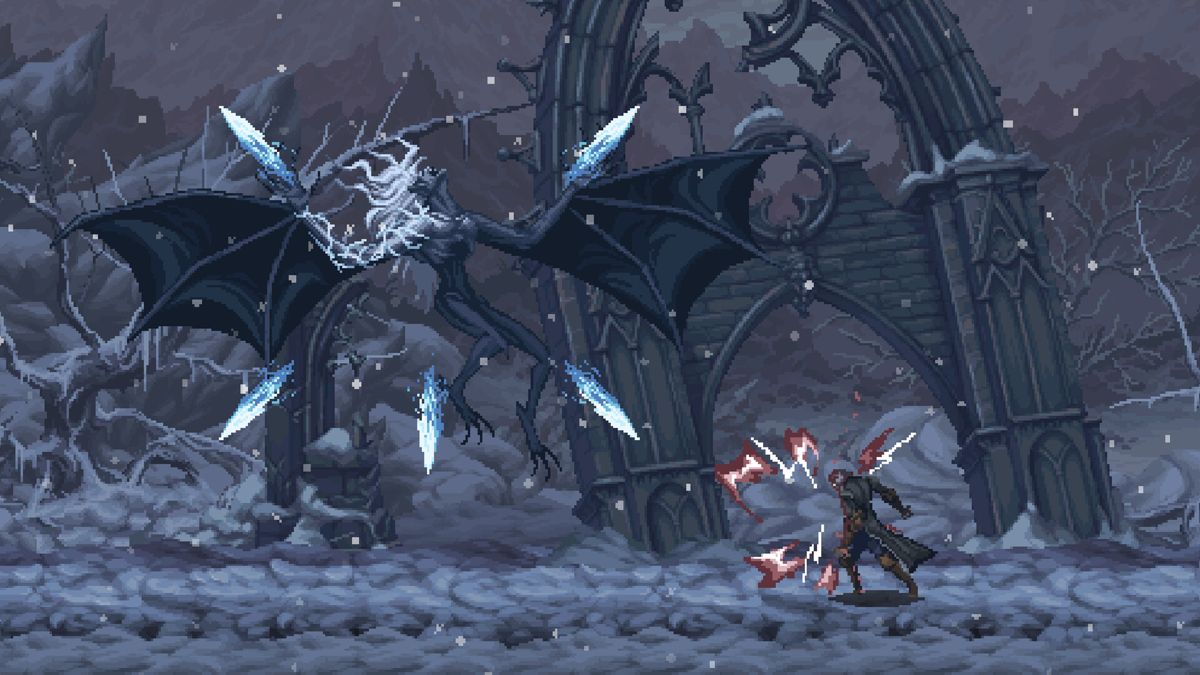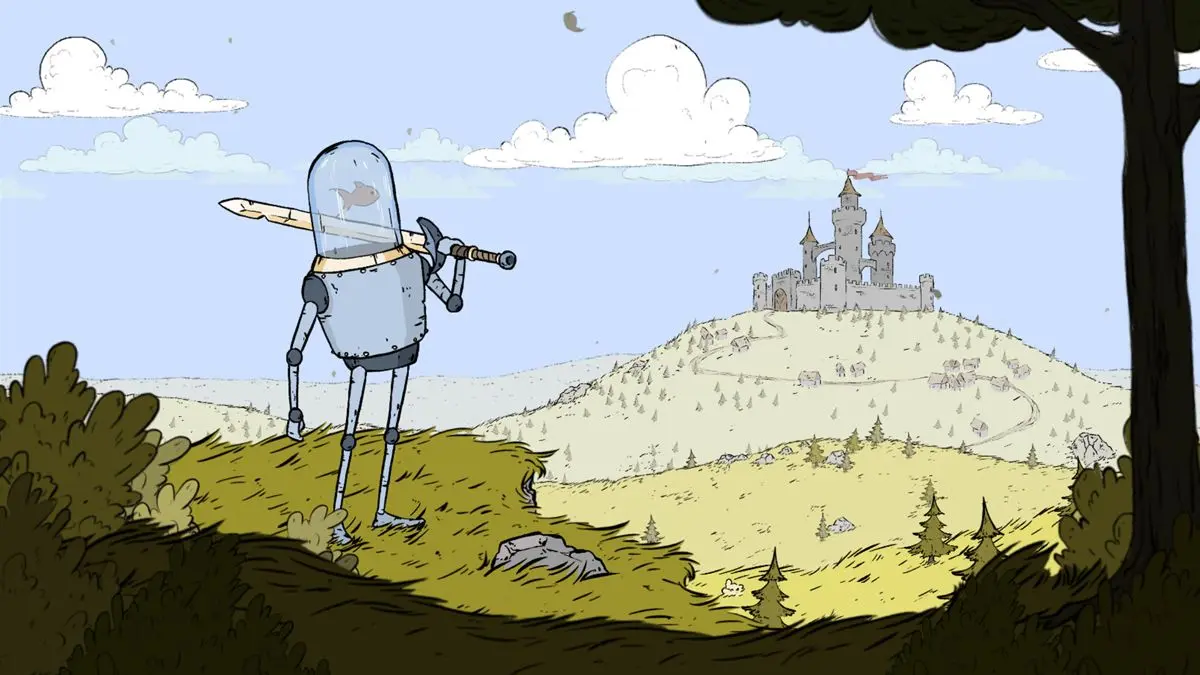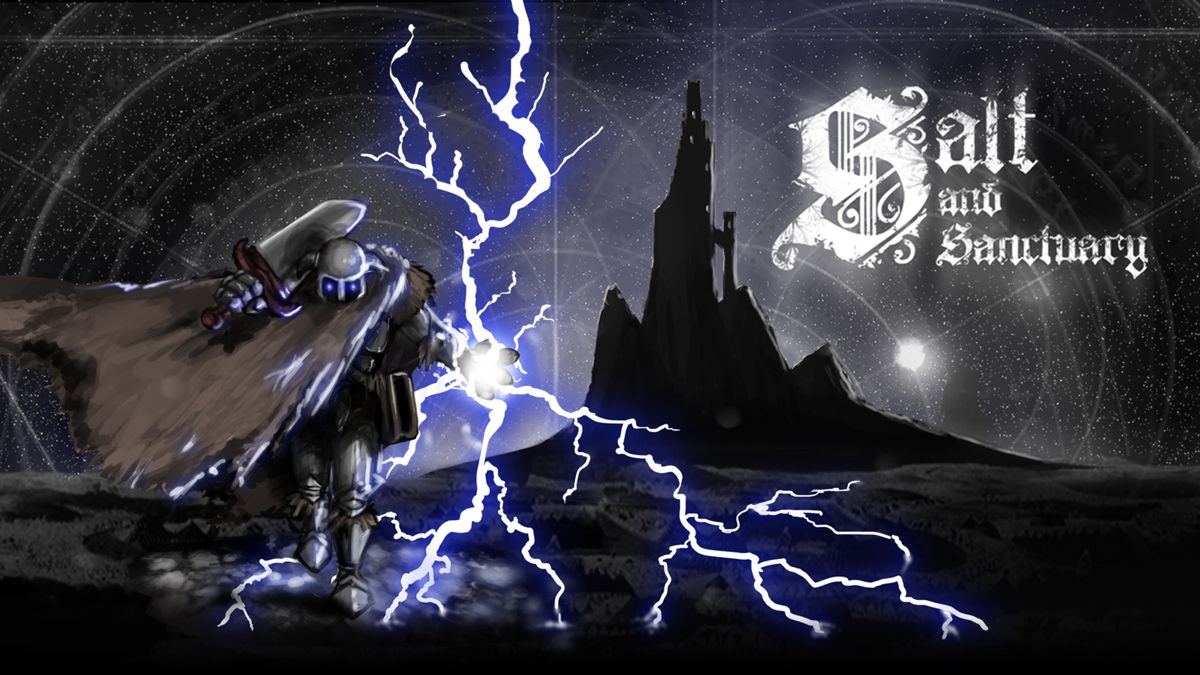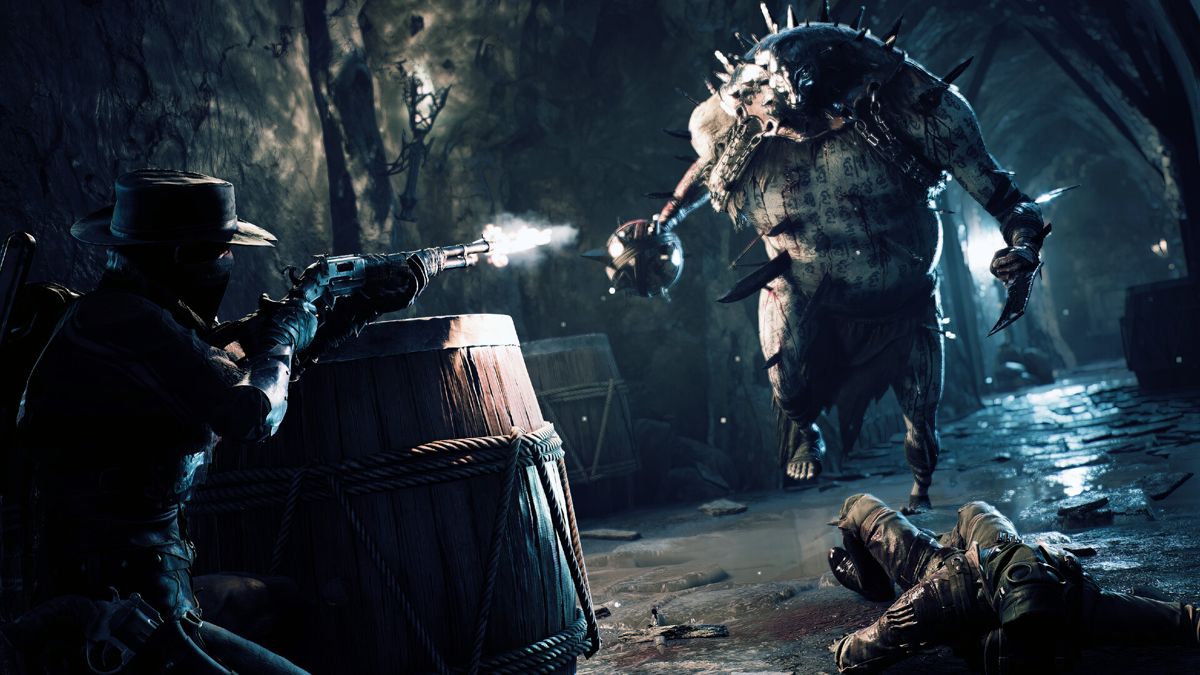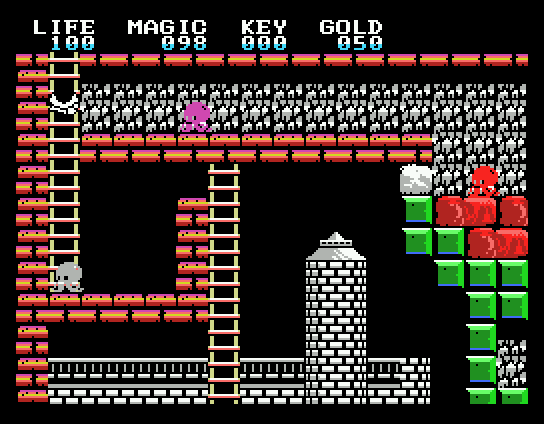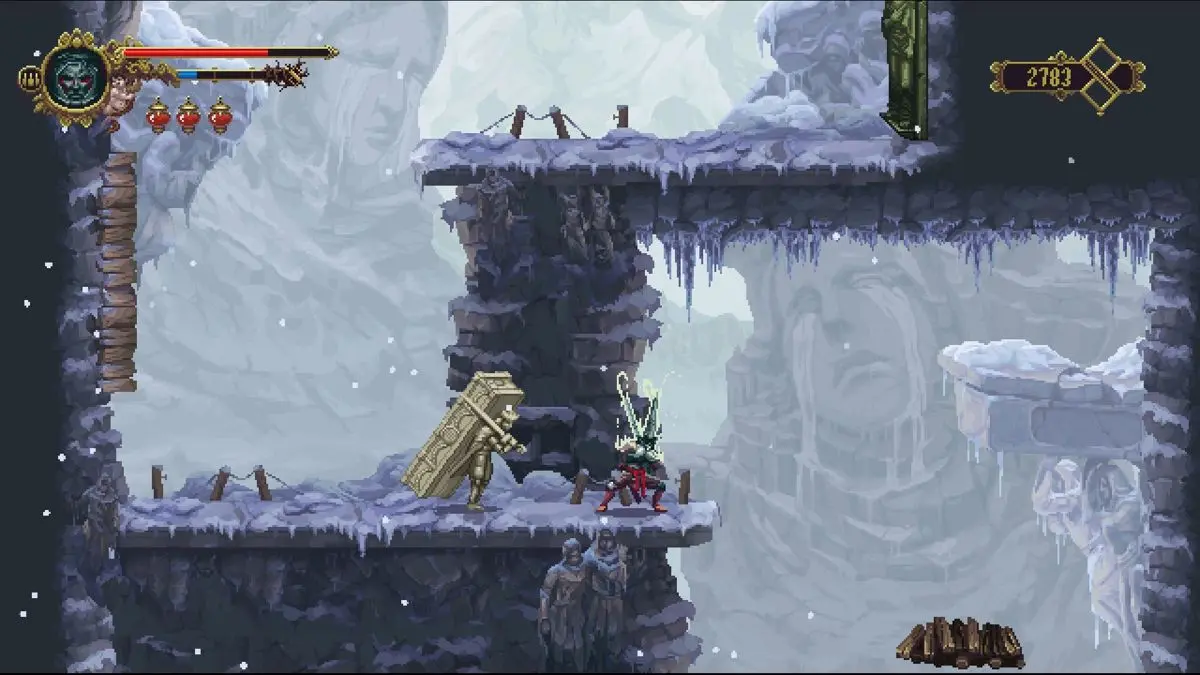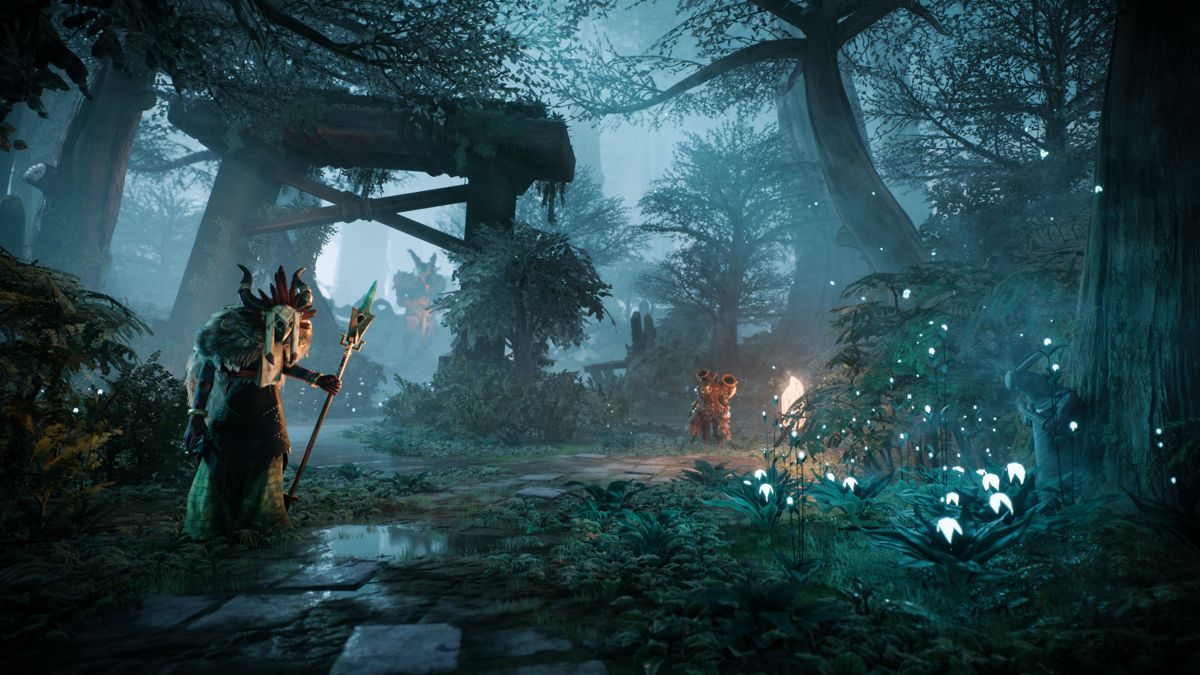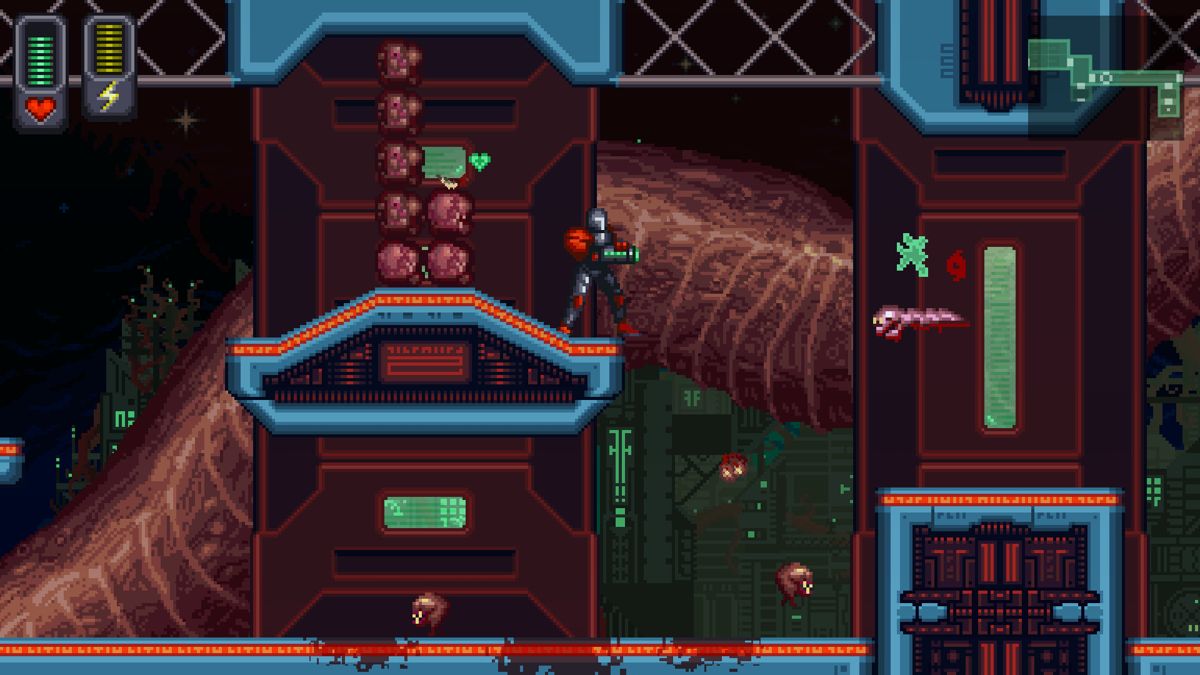Results
Montezuma's Revenge
challenging, environmental puzzles, labyrinthine
Montezuma's Revenge, released in 1984 for various platforms, is a notoriously challenging and unforgiving platformer that stands out for its intricate level design and punishing gameplay mechanics. Unlike many contemporaneous platformers that focused on linear progression, Montezuma's Revenge features a non-linear, maze-like structure with interconnected rooms and multiple paths to explore. Each level is a labyrinth filled with deadly obstacles, treacherous traps, and navigational puzzles that require precise timing and meticulous planning. The game's difficulty stems from its strict resource management system. Players must carefully manage their limited supply of keys, which are required to unlock doors and access new areas, as well as their stock of torches, which serve as both a light source and a weapon against enemies. Running out of either resource can lead to an untimely demise, forcing players to restart the level from the beginning. Another unique aspect of Montezuma's Revenge is its scoring system, which heavily incentivizes exploration and risk-taking. Players earn points not only for collecting treasures but also for performing daring feats, such as jumping over deadly pits or navigating through treacherous rooms filled with hazards. This encourages players to take calculated risks and thoroughly explore every nook and cranny of each level, adding an extra layer of challenge and replayability. Despite its age, Montezuma's Revenge remains a revered classic among hardcore platformer fans, praised for its uncompromising difficulty, intricate level design, and the sense of accomplishment that comes with mastering its demanding gameplay mechanics.
Scurge: Hive
sci-fi, challenging, varied biomes
Scurge: Hive, released in 2006, is a third-person shooter game developed by Tragical and published by Kheops Studio. While it shares some standard elements with other games in the action-horror genre, Scurge: Hive sets itself apart with its distinct atmosphere and gameplay mechanics. The game takes place in a dystopian, post-apocalyptic world overrun by a mysterious alien infestation known as the "Hive." The player assumes the role of a mercenary tasked with navigating through this hostile environment, battling against hordes of grotesque, mutated creatures. One of the standout features of Scurge: Hive is its emphasis on ammo and resource management. Ammunition is scarce, forcing players to carefully plan their attacks and prioritize headshots for maximum efficiency. Additionally, the game introduces a unique "nano-forge" system, which allows players to craft and upgrade their weapons using materials scavenged from the environment. The game's level design is noteworthy, with intricate and interconnected environments that encourage exploration and backtracking. Players must navigate through claustrophobic corridors, dilapidated buildings, and underground tunnels, all while fending off relentless enemy attacks from multiple angles. Scurge: Hive's combat mechanics are intense and unforgiving. Enemies exhibit intelligent behavior, often flanking or overwhelming the player with sheer numbers. The game also features a dynamic damage system, where different body parts can be targeted and dismembered, adding a brutal layer of realism to the combat. While the game's graphics may have aged, the atmospheric design and sound design still hold up remarkably well. The eerie, industrial soundscape and unsettling ambient noises contribute to the game's overall sense of dread and tension. Despite its niche status, Scurge: Hive has garnered a dedicated cult following among fans of the action-horror genre, particularly those who appreciate its challenging gameplay, resource management elements, and uncompromising difficulty.
The Last Faith
igavania, pixel art, challenging
The Last Faith is a 2D side-scrolling action-platformer released in 2023, developed by Kumi Souls Games and published by Playstack. It falls firmly within the Metroidvania subgenre, with clear inspirations from games like Castlevania: Symphony of the Night and Bloodborne. The game is set in a dark, gothic world and features pixel art graphics with detailed backgrounds and fluid animations. Players control a character named Eric, exploring a vast, interconnected world filled with hostile creatures and challenging boss encounters. As typical for the genre, The Last Faith emphasizes exploration and character progression. Players gradually unlock new abilities and weapons that allow access to previously unreachable areas. The combat system is fast-paced and punishing, incorporating elements reminiscent of Soulslike games, including a stamina system and high difficulty. The Last Faith distinguishes itself with its intricate level design, atmospheric soundtrack, and a blend of melee and ranged combat options. The game also features multiple endings, encouraging replayability and thorough exploration. Given your familiarity with the genre, you'll likely appreciate The Last Faith's attempt to merge classic Metroidvania elements with more modern Soulslike mechanics, creating a challenging and atmospheric experience that pays homage to its influences while carving out its own identity.
Feudal Alloy
low fantasy, grindy, pixel art
No synopsis available.
Salt and Sanctuary
platformer, low fantasy, high fantasy
Salt and Sanctuary is a challenging 2D action-platformer with a deep, interconnected world and Souls-like combat. Players must navigate a mysterious, hand-drawn world, overcome treacherous foes, and uncover the secrets of a forgotten land.
Remnant II
shooter, challenging, varied biomes
Remnant II is an action-packed third-person shooter with strong RPG elements, developed by Gunfire Games and published by Perfect World Entertainment. Released in July 2023, it's the sequel to the 2019 game Remnant: From the Ashes. As a fan of the genre, you'll appreciate that Remnant II builds upon its predecessor's foundation, offering a more refined and expanded experience. The game retains its core loop of intense combat, procedurally generated worlds, and challenging boss battles, while introducing several new features: 1. Expanded Archetype system: Players can now choose from multiple archetypes (classes) and even combine them for more diverse builds and playstyles. 2. Enhanced multiplayer: The game supports up to 3-player co-op, with improved scaling and balance for group play. 3. More varied environments: The game features new realms to explore, each with distinct aesthetics and enemies. 4. Improved crafting and progression systems: Players have more options for customizing their gear and abilities. 5. Dynamic events and quests: The game introduces more varied and unpredictable encounters throughout its procedurally generated levels. 6. Increased replayability: With multiple endings, secrets, and build options, the game encourages multiple playthroughs. The game maintains its Souls-like difficulty and the fusion of gun combat with melee and dodging mechanics. As someone familiar with the genre, you'll likely appreciate the enhanced depth in character customization and the expanded lore of the Remnant universe.
Legacy of the Wizard
fantasy, environmental puzzles, hidden areas
Legacy of the Wizard, released in 1987 for the Nintendo Entertainment System, is a unique blend of action and puzzle-solving elements, set in a fantasy world. Developed by Sculptured Software and published by Broderbund, the game stood out with its innovative gameplay mechanics and challenging level design. One of the game's standout features was its emphasis on exploration and environmental manipulation. Players assumed the role of a wizard, tasked with navigating intricate dungeons and solving puzzles to progress. Unlike many contemporaneous action games, Legacy of the Wizard required a thoughtful approach, as simply hacking and slashing wouldn't suffice. The game's puzzles were cleverly integrated into the environment, often requiring players to manipulate objects, trigger switches, or use specific spells to overcome obstacles. This added an extra layer of depth and complexity, as players had to carefully observe their surroundings and think critically to proceed. Another noteworthy aspect of Legacy of the Wizard was its innovative spell system. Players could learn and cast various spells, each with unique abilities and applications. These spells not only served as weapons against enemies but also as tools for solving puzzles, adding a strategic element to the gameplay. The game's level design was meticulously crafted, with each dungeon presenting a fresh challenge and requiring players to adapt their strategies. Secret passages, hidden rooms, and unexpected traps kept players on their toes, encouraging exploration and rewarding observant players. Legacy of the Wizard's graphics were impressive for their time, with detailed environments and character sprites that brought the fantasy world to life. The game's soundtrack, composed by David Warhol, was equally noteworthy, creating an immersive and atmospheric experience. While not a commercial success upon its initial release, Legacy of the Wizard gained a cult following among NES enthusiasts and gamers who appreciated its unique gameplay mechanics and challenging puzzles. It remains a beloved classic and a testament to the creativity and innovation that defined the golden era of NES gaming.
Blasphemous
platformer, low fantasy, grindy
Blasphemous is a challenging and atmospheric 2D action-platformer set in the dark, gothic world of Orthodoxia. Players take on the role of the Penitent One, a mysterious and tormented figure, on a quest to uncover the secrets of the Miracle and put an end to the endless cycle of death and rebirth.
Remnant: From the Ashes
shooter, sci-fi, challenging
Remnant: From the Ashes is a third-person survival action shooter developed by Gunfire Games and published by Perfect World Entertainment. Released in 2019, it combines elements of soulslike games with roguelike procedural generation and cooperative multiplayer. As a seasoned player of the genre, you'll recognize the challenging combat and dodge-roll mechanics reminiscent of Dark Souls, but with a focus on ranged combat. The game features procedurally generated levels and enemy encounters, ensuring a unique experience with each playthrough. Key features include: 1. Dynamically generated worlds with randomized quests, enemies, and loot 2. Cooperative multiplayer for up to three players 3. A diverse array of weapons and gear to customize your playstyle 4. Boss fights that require strategy and skill to overcome 5. A post-apocalyptic setting with multiple realms to explore The game's narrative revolves around humanity's struggle against an interdimensional evil called the Root. Players take on the role of a customizable survivor tasked with traveling through portal-like World Stones to various realms, battling enemies and gathering resources to upgrade their equipment. Remnant: From the Ashes stands out in the genre by combining the challenging combat of soulslikes with the replayability of roguelikes and the satisfaction of loot-based progression systems. Its emphasis on ranged combat and cooperative play offers a fresh take on the formula established by games like Dark Souls and Bloodborne.
A Robot Named Fight
sci-fi, pixel art, challenging
A Robot Named Fight is a captivating metroidvania-style action platformer developed by Matt Bitner and published by Hitcents in 2017. While it adheres to the core principles of the genre, the game distinguishes itself through its unique narrative approach and intricate level design. The game's narrative is presented in a nonlinear fashion, with the player uncovering the story's intricacies through environmental storytelling and fragmented dialogue. The protagonist, a robot designated as a maintenance unit, finds itself caught in a complex web of events that challenge its programmed directives and self-awareness. A Robot Named Fight excels in its level design, offering interconnected environments that encourage exploration and backtracking. Each area is meticulously crafted with hidden secrets, challenging platforming sequences, and intricate puzzles that test the player's problem-solving abilities. The game's combat system, while not overly complex, is satisfying and requires strategic use of the protagonist's abilities and resources. One of the game's standout features is its atmospheric presentation. The pixel art visuals are striking, with each environment exuding a distinct personality and mood. The game's soundtrack, composed by Ryan Roth, enhances the immersive experience, seamlessly blending with the game's tone and themes. A Robot Named Fight also boasts a high degree of replayability, with multiple endings and collectibles that encourage multiple playthroughs. Additionally, the game offers various difficulty settings, catering to both casual and hardcore players alike. Overall, A Robot Named Fight is a meticulously crafted metroidvania that stands out for its narrative depth, environmental storytelling, and intricate level design. While it may not revolutionize the genre, it offers a captivating experience for fans of the metroidvania style, blending satisfying gameplay with thought-provoking themes and atmospheric presentation.
Filters
Search Term
Properties
Platforms
Tags (include)
Tags (exclude)
Get Your Game Noticed
Advertise your game with MetroidvaniaDB and reach a community of people who know exactly what they're looking for:
Your game.
Native & Banner Ad Spots
Multi-week Discounts
Game Launch Packages
Discounts for Indie Developers

